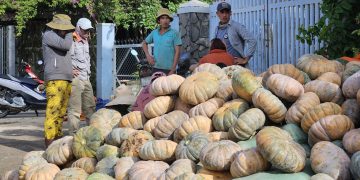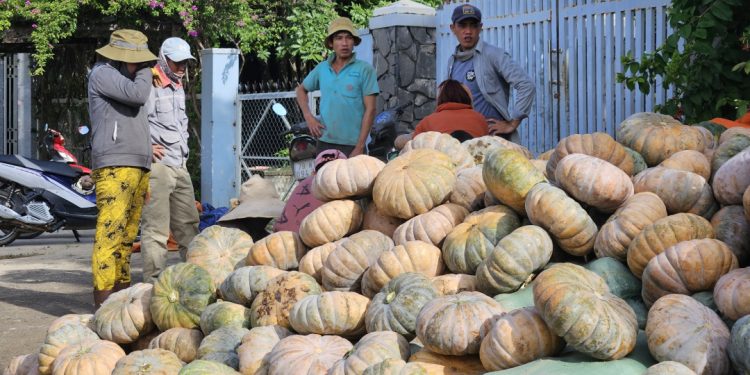#Agriculture #Farmers #CropManagement #RuralDevelopment #Sustainability #Collaboration #AgriculturalUnion #KhanhHoa #RedPumpkin #HarvestSupport
In the picturesque landscapes of Ninh Son, Ninh Hoa, approximately 450 hectares of vibrant red pumpkins are ready for harvest, yielding around 6,000 tons. Despite the bountiful harvest, the market is presenting a tough scenario, with prices ranging from 3,000 to 5,000 VND/kg. Recognizing the plight of local farmers, the Department of Agriculture and Rural Development convened a comprehensive meeting to address the issue.
During the meeting, the Provincial Planting and Crop Protection Bureau provided insights into the current state of red pumpkin cultivation and consumption in Ninh Son. With a unified goal to support farmers, various entities proposed and discussed potential solutions. Subsequently, the Department agreed to implement a structured plan to facilitate the consumption of red pumpkins in Ninh Son.
The plan includes the active involvement of the Agricultural and Rural Development Union, which is mobilizing its members, workers, and officials to collectively contribute to the consumption effort. The Planting and Crop Protection Bureau, in collaboration with the Promotion Center and the Forest Protection and Development Fund, is coordinating support points for red pumpkin consumption in strategic locations.
Simultaneously, the Quality Management Bureau for Agriculture and Aquaculture is engaging businesses and collaborating with other units, including the Rural Development Promotion Bureau, the Fisheries Bureau, and the Clean Water and Rural Environmental Sanitation Center, to establish additional consumption support points.
In an exemplary show of solidarity, the Agricultural Union has initiated a campaign urging each of its 3,500 members to personally contribute by consuming at least 10kg of red pumpkins, directly benefiting the local farmers in Ninh Son.
Khanh Hoa’s proactive approach to red pumpkin consumption showcases the potential for collaborative solutions to agricultural challenges. By involving various stakeholders, from unions to quality management agencies, the initiative not only addresses the immediate market issues but also fosters a sense of shared responsibility among the community. As the agricultural landscape evolves, such innovative strategies become integral for the sustainable growth of the farming sector.































